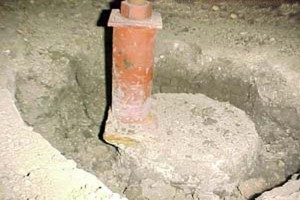Structural Home Inspection – Certified Building Code Official
The structural home inspection is an important part of the home buying process. As a Professional Home inspector we can only note any visual deficiencies and comment on probable cause of any visible damage, such as; cracked framing, sagging support beams, rotted or damaged supporting components or damaged foundations. Typically a home inspector does not provide a professional opinion as to the degree it has affected the structural integrity of the building.
The Alliston Home Inspector looks at every supporting structure from top to bottom for unusual structural distress or deflections in the exterior framing of the roof, exterior facades and foundations which could indicate improper installation or material failure. Uneven floors, cracking drywall, water penetration – may be signs of structural problems. Cracked foundations, settling corners, angled exterior walls – may likewise indicate issues with a building’s structural integrity and could be indicators of movement.

Unsafe Footing for Steel Post
Roof trusses, for example, are designed under Part 4 of the Ontario Building Code. When a roof truss is damaged, a detail is required showing method of repair, the detail must be signed by accredited designer or engineer.
Many houses, as a result of problems in one or more categories, sustain damage to such structural components as foundation walls, floor joists, rafters, and window and door headers. Settlement of the structure, in addition to causing possible damage to the foundation, can also cause problems in the plumbing system. Pipes that were once sloped correctly to carry water away may now be sloped the wrong way if settlement was severe. Sagging is a another problem in older homes compounded by renovations to the house. Support beams and structures are often cut away, with no thought to their load bearing requirements.
It is important to remember that any work which involves the Structure of the home requires a Building Permit.
Homes built on expansive soils are required to have footings that are double size of normal footings. Although this is a requirement for modern day homes, foundations built in the fifties and sixties probably would not have had to comply with this requirement. Current requirements call for a minimum bearing pressure of 75 kPa. A subsurface investigation may require a designer, in conjunction with a geotechnical engineer, to determine size of footings.
Depending on the type and depth of back fill material and the manner of its placement, it is common practice in residential construction to allow the back fill soil to consolidate naturally by providing an additional 3 to 6 inches of fill material. The additional back fill ensures that surface water drainage away from the foundation remains adequate (i.e., the grade slopes away from the building). This is all dependent on your local Building Departments inspectors and requirements.
Foundation slabs that are within 600 mm of exterior ground level are required to have perimeter insulation that extends 600 mm below exterior ground.
Air barriers are now required in all assemblies that separate conditioned ( heated areas ) from unconditioned area, such as garages etc.
When looking for a Risk Free home inspection, call Alliston Residential Property Inspections at 705-795-8255
When buying a new home often there is a wood stove, fireplace of pellet stove that requires inspection. The Alliston Certified WETT Inspector provides Site Basic WETT Inspections for $50.00 when included as part of home inspection package.
